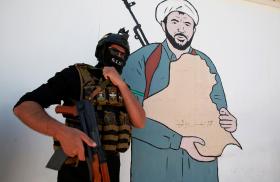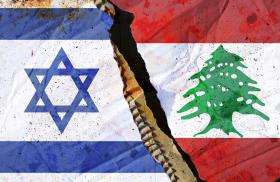
- Policy Analysis
- Articles & Op-Eds
Why There Is Still a Role for the P5+1 in the Iran Nuclear Talks

Iranian truculence likely ensures that the P5+1 -- not direct bilateral talks -- will remain the most meaningful forum for nuclear negotiations.
As I wrote in a recent op-ed for the New York Times, calls for direct talks with Iran have been on the rise, in large part due to the lack of movement in talks between Iran and the P5+1, which includes the United States, the United Kingdom, France, Germany, Russia, and China. The P5+1 is entering its eighth year of discussions with Tehran, yet has made little progress toward a nuclear agreement while Iran has vastly expanded its nuclear capacity. This raises a question I do not address in the op-ed -- is there a continued role for the P5+1?
For diplomats, large international coalitions hold an irresistible allure, especially when dealing with troublesome regimes. Acting in concert through groupings such as the P5+1 improves international compliance with sanctions and reinforces the target state's isolation, in theory amplifying the pressure upon it and enhancing the prospects for achieving the coalition's objectives.
Such a broad grouping has downsides, however. First, coordination -- whether on carrots or sticks -- takes time, and lots of it. A host of factors, from each state's domestic politics to unrelated international disputes among the members, prevents quick resolution of differences.
Second, the states all have different interests at stake. The United States sees Iran as a broad threat, given its support for terrorism and its destabilizing activities in the Middle East, which is only magnified by Tehran's pursuit of nuclear weapons. Russia and China see the issue differently. Tehran may target restaurants in Washington, but it avoids entangling itself in Chechnya and Xinjiang. As a result, many in Moscow and Beijing see Iran not as a threat, but as a potential (if difficult) partner in constraining Washington's exercise of power and influence in the region.
The result of these varying interests is a lowest-common-denominator approach, whereby the group focuses on the one thing that they can all agree upon. In this case, that is Iran's compliance with the international nonproliferation rules, which all of the major powers would like to see preserved. Any agreement the P5+1 reaches is likely to focus narrowly on Iran's nuclear capabilities; other issues of interest to the United States and the European Union -- whether Iran's regional activities or human rights record -- are left to be pursued by separate, ad hoc coalitions of likeminded countries outside the official negotiations.
Given these downsides and the plodding pace of the negotiations, it is little wonder that calls for direct U.S.-Iran talks are on the rise. But the dismissal of such talks by Iran's supreme leader and the long and unsuccessful history of U.S.-Iran contacts suggest bilateral talks would not prove any more of a silver bullet than multilateral ones have been. The U.S. offer of direct talks with Iran is likely to make more of an impression on our coalition partners -- convincing them that we are going the extra mile on diplomacy and hopefully pushing them to do the same on pressure -- than on the Iranian regime.
Indeed, while we should not hesitate to employ diplomacy creatively and flexibly in service of our policy aims, Iranian truculence likely ensures that the P5+1 will remain the most meaningful forum for talks on Iran's nuclear program. Tehran appears to see compromise as more dangerous than maintaining its confrontational stance toward neighbors and the West; Iran's leaders must be persuaded that in fact failing to compromise is the greater danger. Doing so will require various forms of international pressure -- diplomatic, economic, and military -- which must be marshaled through multilateral diplomacy. As I note in the Times piece, a broader U.S.-Iran breakthrough, if it occurs, is more likely to be a consequence of a strategic shift by Iran than a cause of one.
Michael Singh is managing director of The Washington Institute.
Foreign Policy


